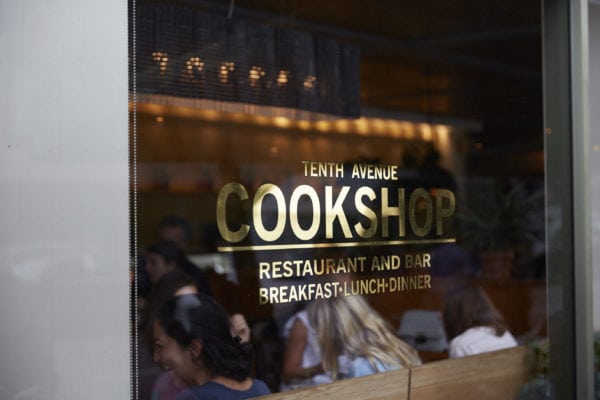NYC
The Iron Fist / Humanizing Transparency of DOH Grades
The New York City Department of Health does valiant work, policing restaurants across the city to make sure they’re up to code, and keeping New Yorkers and city visitors safe. A few years ago, they implemented the letter grading system, requiring establishments to display their “A” “B” “C” or pending grade at the door.
The system’s in the news this week thanks to Thomas Keller’s Per Se, considered by some the best restaurant in the city (FWIW, this writer disagrees). The Columbus Circle spot earned itself a “C” grade thanks to a litany of violations, including food stored above/below proper temperatures, lack of proper hand-washing facilities, and (!!) tobacco use. For his part, Chef Keller tweeted his willingness to work with the DOH to ensure the problems are corrected — and that the doors to the kitchen are always open to guests. (Suddenly, this seems alarming. I mean, we’re talking 42 violation points here. A “C” is awarded for 28 points and above. You guys.)
On the other end of the spectrum, there’s beloved Brooklyn pizza joint DiFara’s (recently featured in David Chang’s Lucky Peach, actually) — widely considered some of the best pizza in New York (I agree with this one). The family-run operation was given a “B” from the DOH and took to Facebook to explain the ranking. (It has to do with handicap accessibility and the number of seats — in this case, folding chairs — in the dining room.)
Grades aside, the interesting thread here is the restaurants’ ability to communicate directly with patrons online. Not through press, not through a mouthpiece — straight from the source. In some cases (DiFara), they come out looking OK. In others (Per Se), something seems amiss. Regardless, the restaurant and chef now have the ability to inform and mobilize a support base. Transparency. Awesome.

DELIVERY
Seamless’s Slice of the Pie
Thanks to its recent IPO filing, we have more visibility into the Seamless business model (and, by association, the larger technology-fueled-delivery-industry). Its business model is interesting, and varies by restaurant, with Seamless taking about 14 percent of every order.
Unsurprisingly, there’s also a pay-for-play model, giving restaurants the opportunity to pay more to show up in a more favorable position as diners search for takeout options. This isn’t unlike sponsored posts in Google search results, though Google does good job of calling them out as paid search results — I’ve not seen the same in Seamless (or GrubHub.)
The pay-to-play thing isn’t awful. Capitalism! but when a consumer expects an unbiased opinion, you gotta note when cash is involved. And thanks to the anonymity of the internet, these companies — all of them — need to maintain consumer trust. (Remember those fake restaurants that popped up on Seamless in New York two weeks ago?)
SOCIAL
Pls Don’t Tweet
Each February, west coast IPA fans flock to any available keg of Russian River Brewing Company’s Pliny the Younger, a triple IPA produced in limited quantities and released in February. It goes one of two ways: bar announces they have a keg, fans line up around the block to buy a pint or two. Or, bar doesn’t announce it has a keg, patrons discover PtY, and social-share the crap out of their discovery, creating aforementioned line.
This year, a wise bar in Portland bucked the trend, instead labeling its Pliny keg “Miller High Life” and, once intrepid patrons figured it out, prohibited them to share the keg’s existence on social media. This is a spectacular example of social media gone mainstream; not five years ago, restaurants and bars could publicize specials to a small but dedicated group of Twitter followers. Now, with no less than ten ways to share locations, photos, details and every other move, instead of creating some level of underground buzz, social sharing can literally blow up a spot. (I hope the bar’s regulars could enjoy the IPA before word got out.)
WELP
Chefs and Restaurateurs on How to Handle Yelp
Enjoyable read: this thoughtful response from thoughtful professionals regarding one of C+T’s favorite topics: ridiculous Yelp reviews. Chefs (like New York’s Anita Lo) and restaurateurs (like Seattle’s Brian Canlis) weigh in on Yelp reviews and how to handle them. Spoiler alert: DON’T READ THEM. Or, if you do read them, don’t live and die by them. Most chefs let restaurant GMs handle the online reviews and address any real issues — which, to be fair, can happen. Boston’s Tony Maws says it best:
“The reason I don’t read it personally is because it’s infuriating, the idea that someone feels empowered while they’re hiding behind a computer screen. I don’t understand why people think that’s being helpful to anybody. From my perspective, why would I trust Yelpers who aren’t even courageous enough to give real feedback to the restaurant? If you care enough about the restaurant then give me the feedback. I’m a big boy.”
My sentiments exactly.
Digestifs
- IBM’s “Watson” cooks for SXSW-goers, is a hit — CNN Eatocracy
- Follow this account: @TFL_Garden, photo dispatches from the Yountville French Laundry garden —@TFL_Garden
- The best tippers in America, according to Square — Time
- The future of Pizza Hut: the touchscreen pizza customization table — TechCrunch



